Goldbug Software
Second Contats for Mac
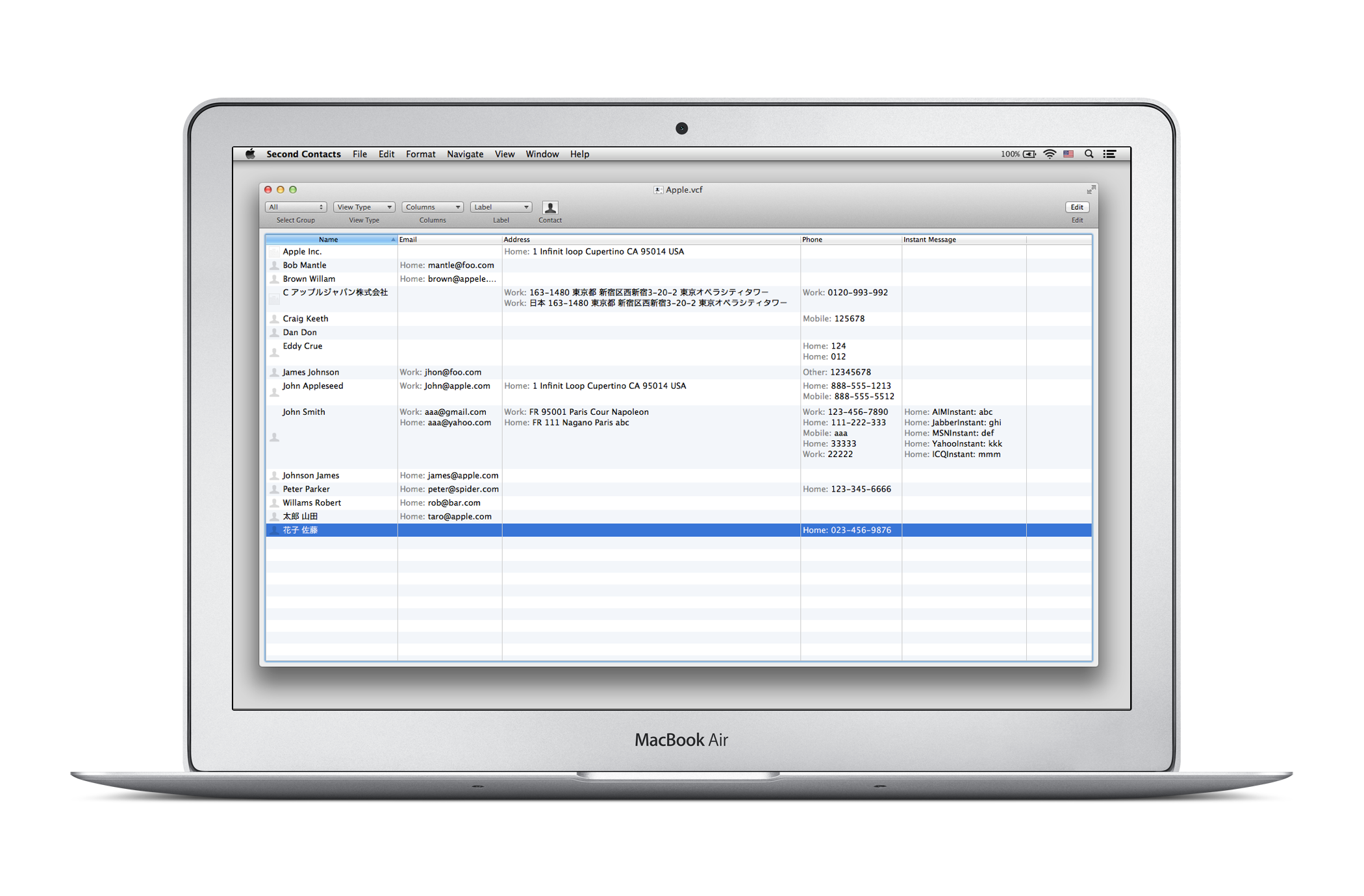
What's News
Feb 14, 2024 Second Contacts 2.7.8 is released.
- Stability improvements and bug fixes.
Feb 14, 2024 What is the difference between Second Contacts2 and Second Contacts
Activities
Second Contacts for Mac 2.7
Second Contacts is a integrated application with AddressBookAid and vCard Editor which is dedicated to editing contacts from vCard or AddressBook. The table view style and powerful sort and find&replace functions make it easy for editing contacts. And you can move or copy contacts between vCard and AddressBook windows by drag&drop.
Also Second Contacts for Mac shares vCard files in iCloud with Second Contacts for iOS.
And this application doesn't communicate with outside servers using the Internet. The Contacts data is only used inside of the app and never be sent to any servers.
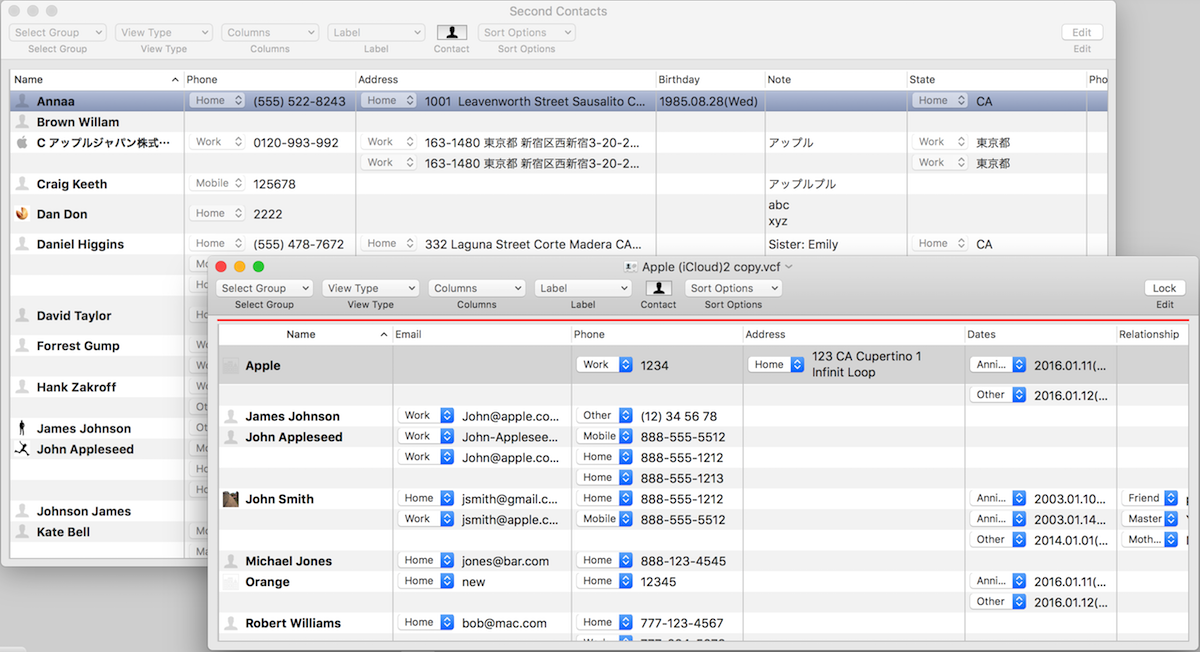
Enabling to access your contacts
Your contacts are protected in your system.
When Second Contacts is launched at first time, an alert for enabling access to your contact will be shown.
Please allow Second Contacts to access your contacts, otherwise Second Contacts doesn't work.
Features
- Read/Write AddressBook stored in your Mac by Apple Contacts.
- Read/Write vCard and Read CSV.
- Import from vCard.
- Export as vCard/CSV.
- Sorting
- Find and Replace by TextFinder.
- Comparing arbitral two contacts and editing.
- Detachable Contact Info Popover
- Context menu for action and editing.
- Input Address
- Bulk edit function of data in the selected multiple cells.
- Show a contact as QRCode with various formats.
- Drag and Drop between AddressBook and vCard.
- iCloud Drive "vCard Editor"
- Adding Custom Label
Editing in spread sheet style
The data is shown in a column separately. Each column has a sort option, it will help you finding duplicated data easily.

You can select the View Type by the menu as below. When you select "Address", the Name and Address columns are shown. The itmes menu can be used to add columns to see other values.
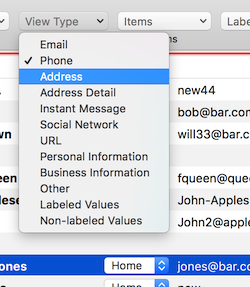
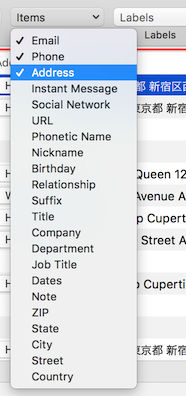
If the data has a label, a designed panel for the type will open when you double-click the cell in editing mode, or double-clik the cell with holding the command key.

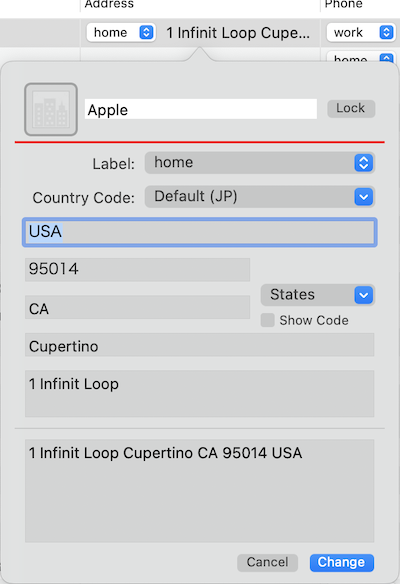
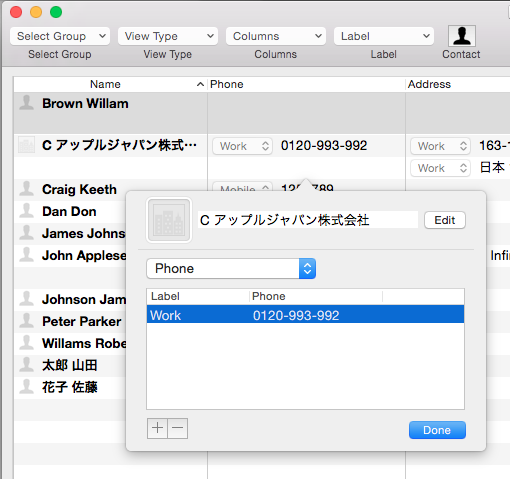
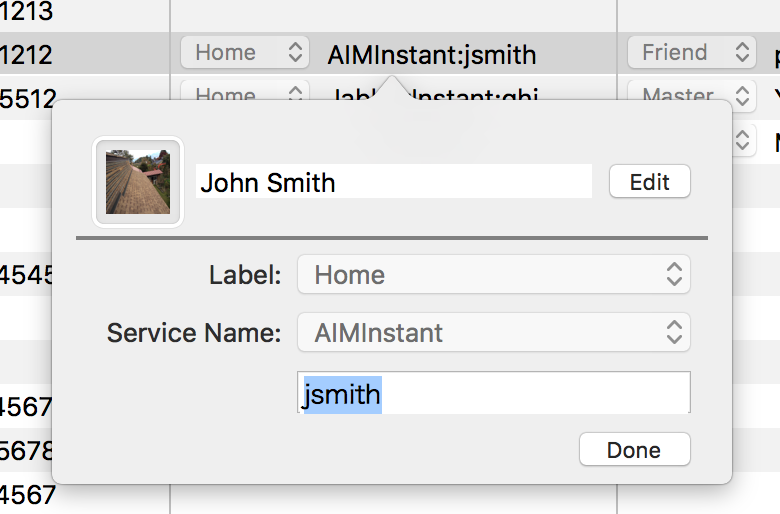
For example, when you double click the Address cell, the Address panel will be shown, and you can edit the items of the address.
When you double click the Address cell with holding the command key, the Address panel will list the addresses in the contact. You can add a address with a label or delete the address.
Read/Write AddressBook directly
Second Contacts can read and write AddressBook which is managed by Apple Contacts application.
When Second Contacts is launched, the contacts by Apple Contacts are shown in the AddrssBook window in the table. You can select which type of data is shown in the window by selecting view type or columns. Since each column has the sort function, you can find the difference between the contacts easily.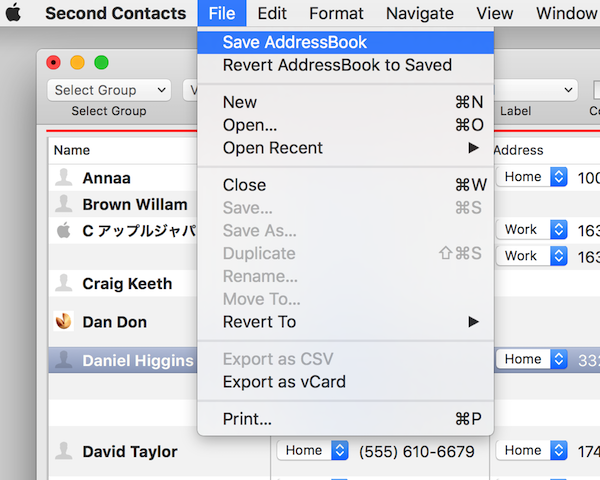
Read/Write vCard and Read CSV
Second Contacts2 can read/write a vCard file and can read CSV file.
To read a vCard file or CSV file, select the file in the file dialog by the open menu in the file menu. Then a new window will open to show contacts in the file.

You can edit the contacts as same as the contacts in your Mac. Also you can drag&drop the contacts to other window of Second Contacts. However you can not edit the CSV file. It is read-only.

The detail is here.
Import from vCard
Second Contacts can import a vCard for inserting the contacts to the vCard you are opening.
When you select the "Import from vCard" menu in the file menu. The open file dialog will open.
After selecting a file in the dialog, another panel will open and show the contacts in the file.
Select contacts in the panel and click the "Select" button, then the contacts will be added to the AddressBook or vCard you are opening.
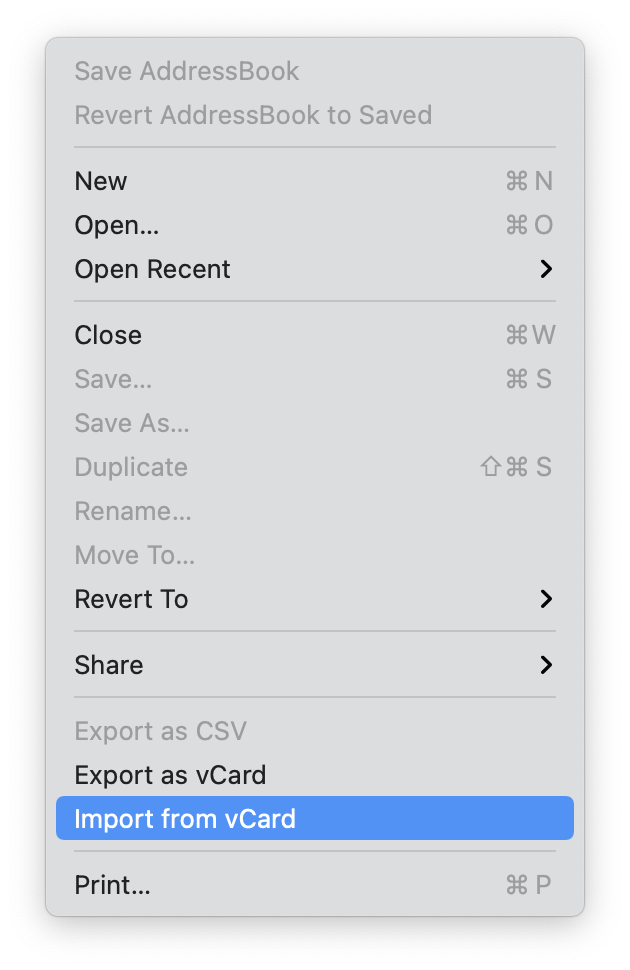
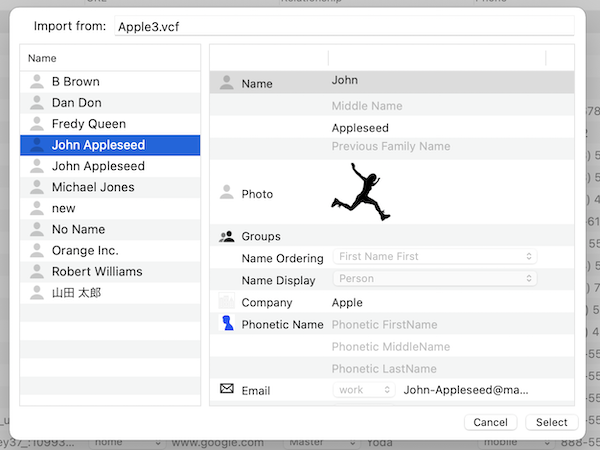
Export to vCard and CSV
Second Contacts2 can export selected contacts to a vCard file or a CSV file.
To export contacts to a vCard file or CSV file, select contacts in the AddressBook or vCard window, then select the "Export as vCard" or the "Export as CSV" menu int the file menu. The Save dialog will open to set the filename.
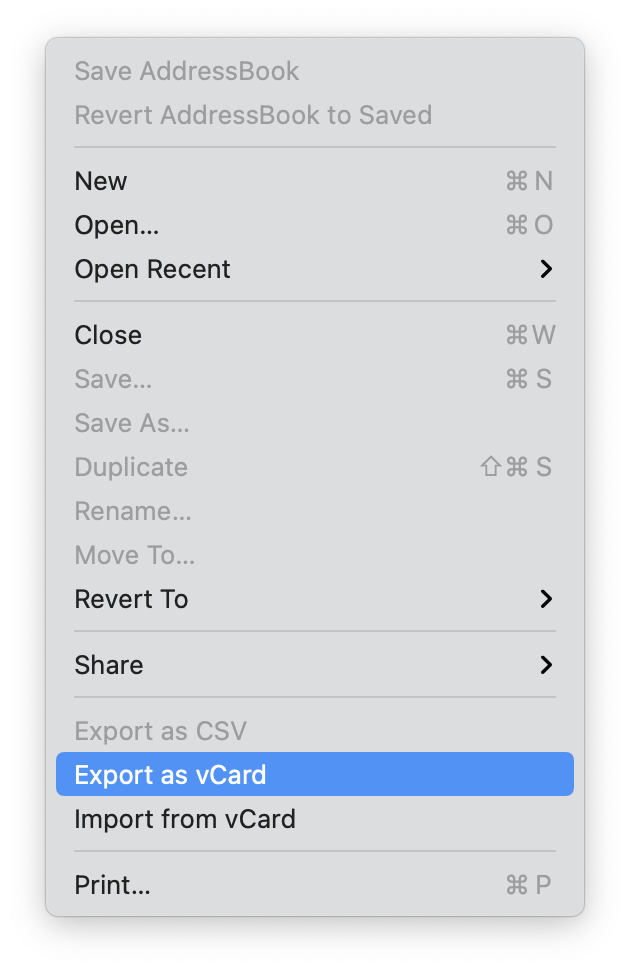
The tips of exporting CSV is here.
Sorting
Each column in the table has a sort button. It will help you finding a duplicate value.
The Sort Options menu in the Toolbar is for changing the sort method. You can sort first/last name in the Name Column and ZIP/State/... in the Address Column.
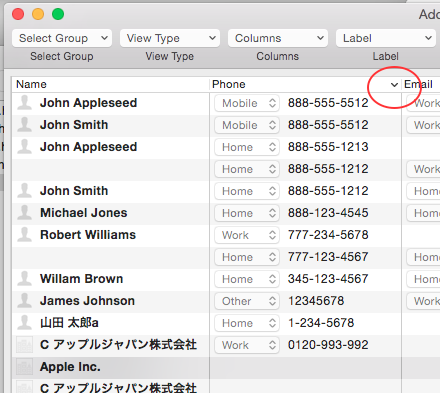
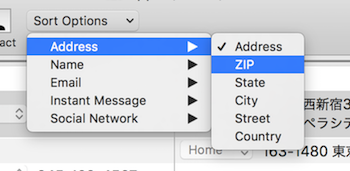
Find and Replace
vCard Editor uses TextFinder for Find and Replace which is introduced in macOS 10.7. You can find a word by name and by other categories with various options including a pattern, and replace it.

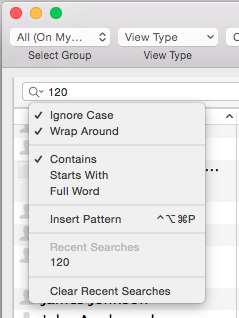

Please note that the way of finding string in the address is changed from vCard Editor 2.5.2. Before 2.5.2 the whole string in the address is used to "find", but now each item in the address is used to "find" a string. For example when State and City are "CA" and "Cupertino", you can not find "Cupertino, CA". However you can replace the string "Cupertino" or "CA". Before 2.5.2 the Address panel is shown when you click the "Replace" button in the Find&Replace bar.
When you select the "Show Find Panel" menu in the edit menu or type Cmd+Shift+F as a short cut, following Find Panel will be shown.

In this panel, the search is performed by narrowing down the items selected by the data type and label. Matching items are listed in the table with their names.
Click the Replace button to replace the orange highlighted text with the string in the Replace field.
Click the "Replace All" button to replace the orange and blue highlighted text.
These operations can be undone by clicking "Undo" in the edit menu.
Also click the "Edit / Lock" button at the top right of the panel to enter edit mode (the button name will be Lock), then double-click a cell in the "Value" column to directly rewrite the value in that cell. This operation can be undoable too.
You can sort the table by each item by clicking the header of the table column.
When you select the "Regex" in the search mode menu, the regex expression is used to find a word. Please refer to the detail of the regex expression at "WiKi Regex expression".
The following example is that the expression, "^.[op]" is used to look for the word which starts with any charcter and the second is "o" or "p".
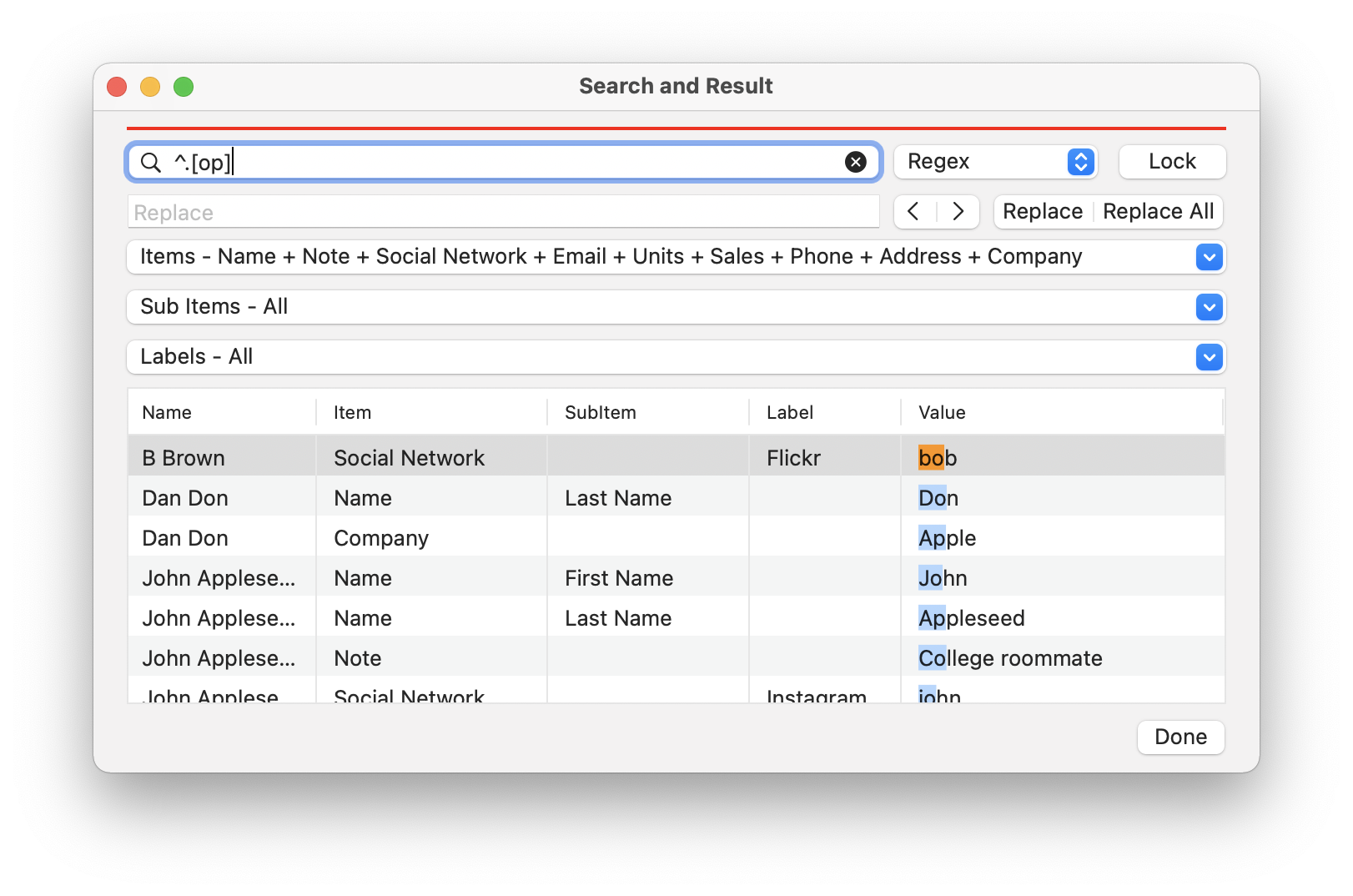
Comparing arbitral two contacts
The compare panel is for comparing arbitral two contacts in the vertical table.
In the edit mode, you can change the value and move/copy between contacts by drag&drop.
In order to copy the value, dragging value with holding option key.
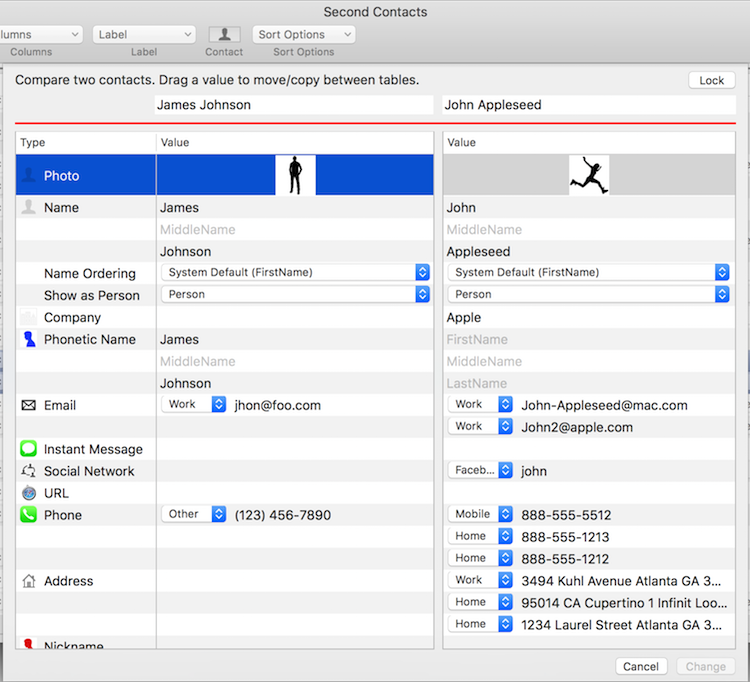
Detachable Contact Info
When the cell in the Name column is dobule-clicked, the Contact Info panel is shown as popover. It shows whole items in the selected contact vertically. The popover is closed automatically when you click the outside of it. However when you drag the outer edge of the popoover, it turns to the normal panel. So it will stay in the desktop until you close it. And you can open the other Contact Info popover and even open the multiple Contact Info panels at the same time. This will bring you the other way of comparing and editing contacts. Also you can copy any items by drag and drop between the Contact Info panels or the main window.

Context menu for action and editing cells
When you control-click the cell, the context menu will be shown as below. Some cells have a action such as opening a mail message, a map which is depending on the type of the cell.
When you ctrl+click on a cell in editing mode, the context menu of cells will show some editing menus.
As the menu says, it is for replacing/appending/deleting text. You can edit multiple cells at once, when multiple rows are selected.

|
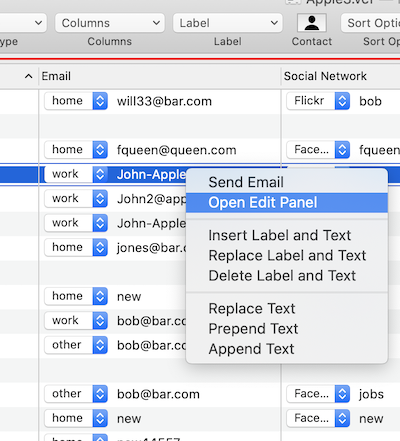
|
Input Address
When you double-click the address cell, the address list panel will open. The plus button in the lower-left corner is for adding a new address value.
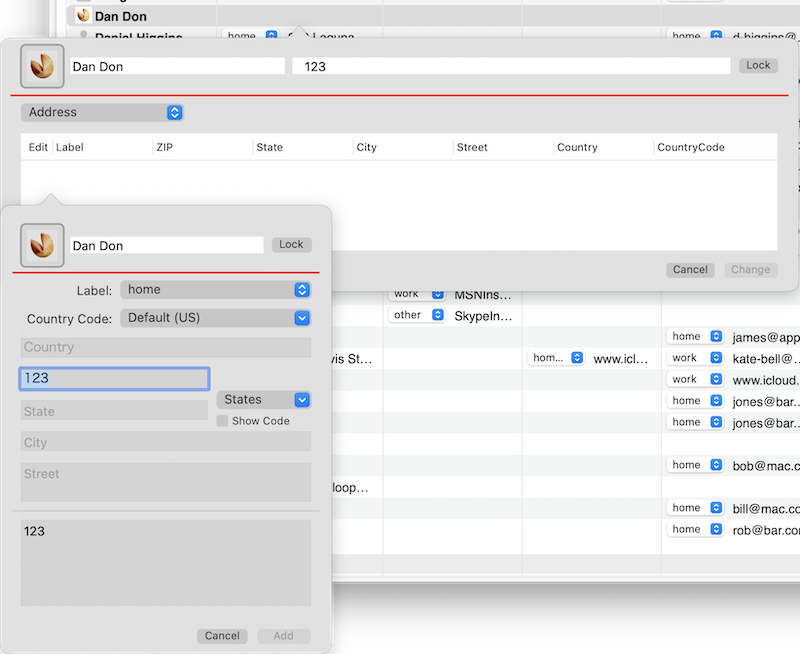
Selecting the Country Code menu enables State pulldown in some countries. You can enter the State name in the State Field by selecting State pulldown.
You can add State pulldown to any country by placing the AddressFormat.json file under the vCard Editor folder in iCloud Drive.
Here is the sample of AddressFormat.json.
Bulk edit function in the selected multiple cells
You can set the same label or value in the selected cells at once.
Select multiple rows, then change the label of one of the cell, or the value by double clicking the value. An alert will be shown for making sure the operation. When you select OK, the values of selected cells in the same column will be changed to what you enter.
You can do the same thing via the replace menu of the context menu too.
Please note that the change can be undo by the "Undo" menu in the Edit menu.

Show a contact as QRCode with various format
Second Contacts can show QRCode of the selected contact, and you can Copy and Paste the image to other documents.
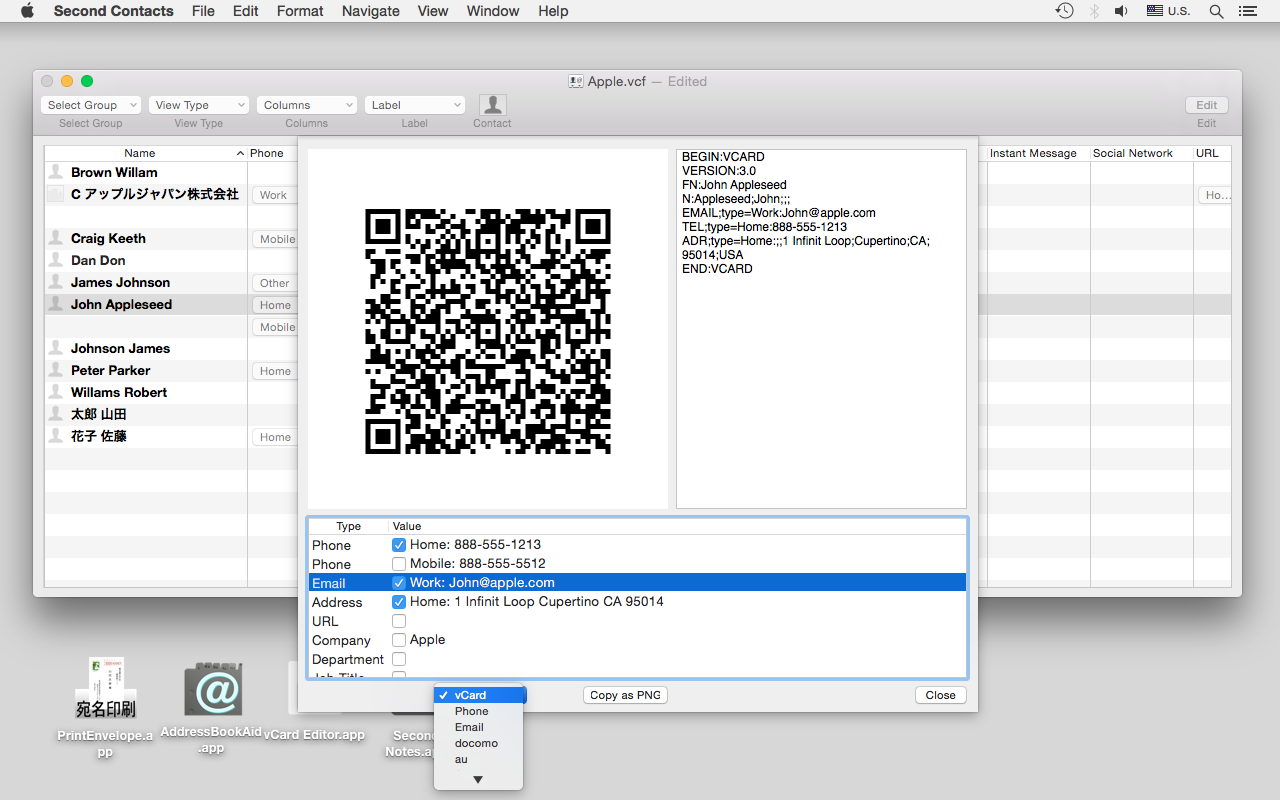
Drag and Drop vCard
You can drag and drop contacts between Second Contacts and Apple Contact or Apple Mail, and also between the Contact Info Panels.
When Groups are visible, Drag&Drop is the way of adding a member to the group.
Please note that you need to click the Edit button in the toolbar in order to unlock the document before you drop contacts from Apple Contacts.
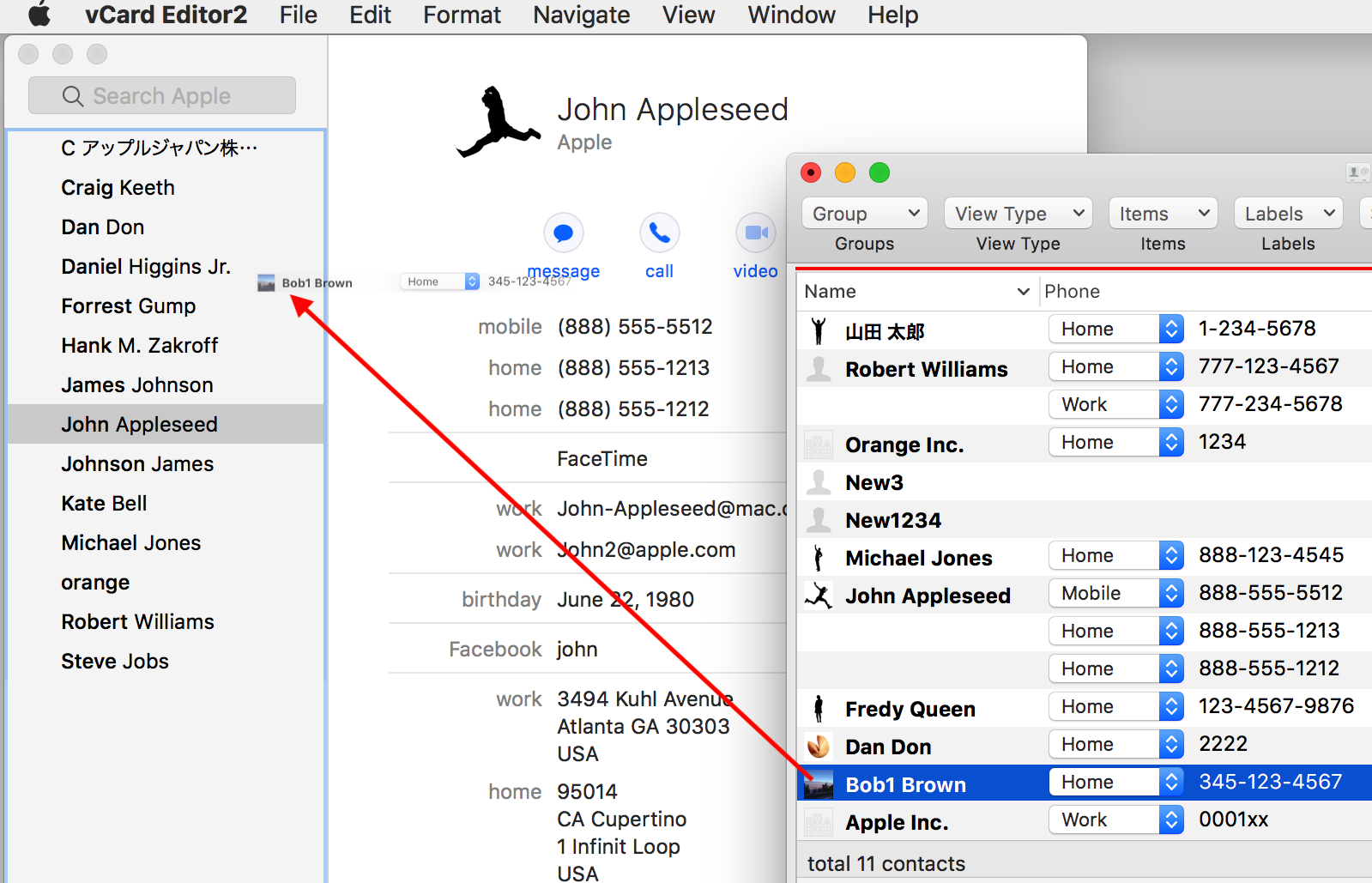
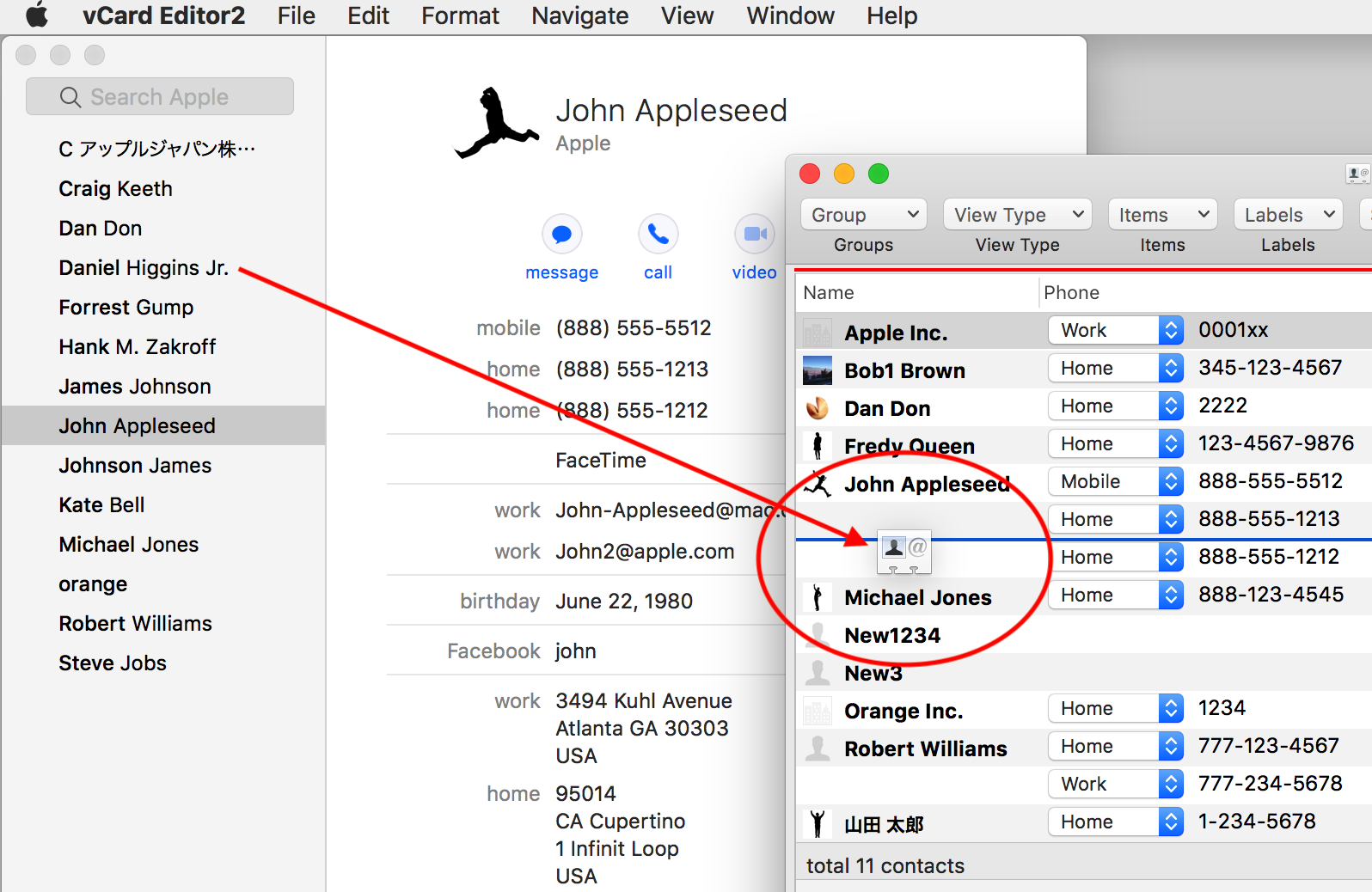
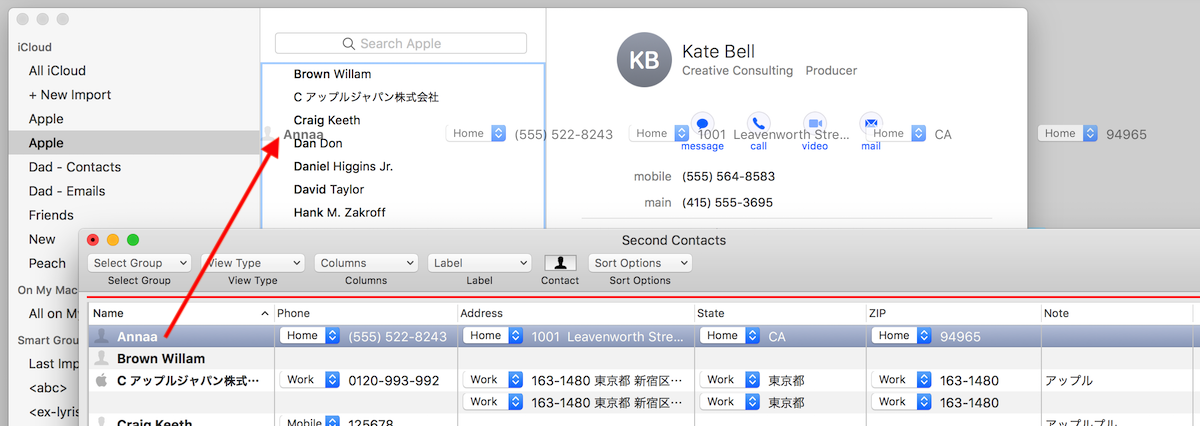
The detail of changing member of group is here.
iCloud Drive "vCard Editor"
Second Contacts for Mac can read/write vCard file in the "vCard Edotir" folder in the iCloud Drive, which is also used by Second Contacts for iOS and our other vCard Application such like vCard Editor.
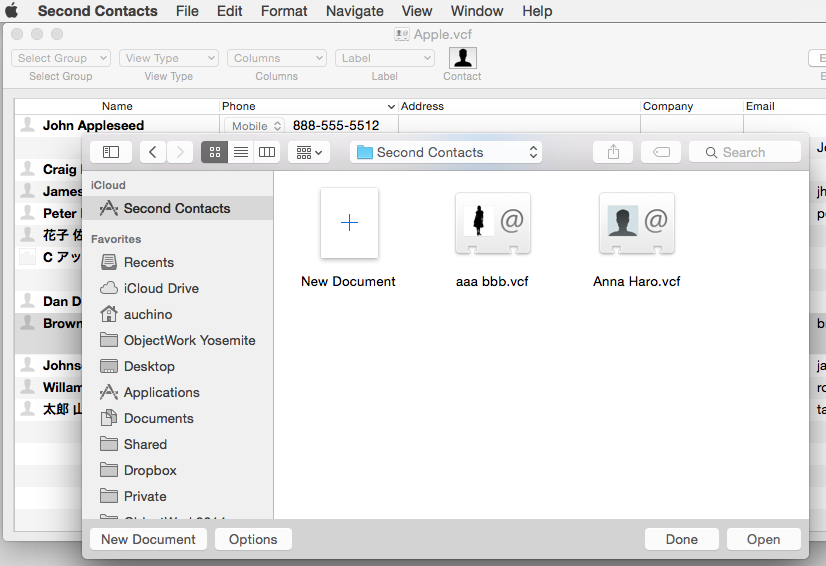
Adding Custom Label
Selecting the "Custom label" in the Navigator menu, the "Custom Label Panel" will open. It is for adding and changin a custom label for each item such as Email, Phone, Address.
Click the plus button is for adding a new label, and click the minus butotn is for deleting the selected label. And dobule-click the label in the table is for changing the label.
And the changing refrects to the AddressBook, can't be undone.
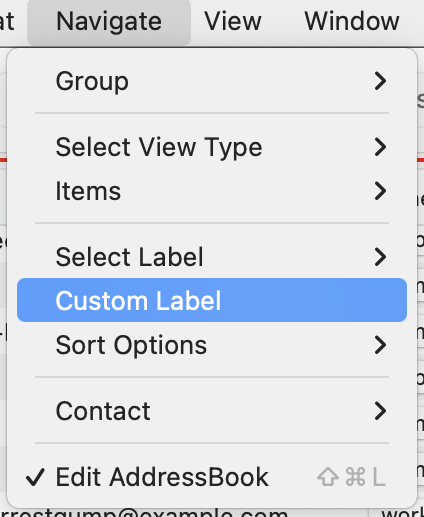
|
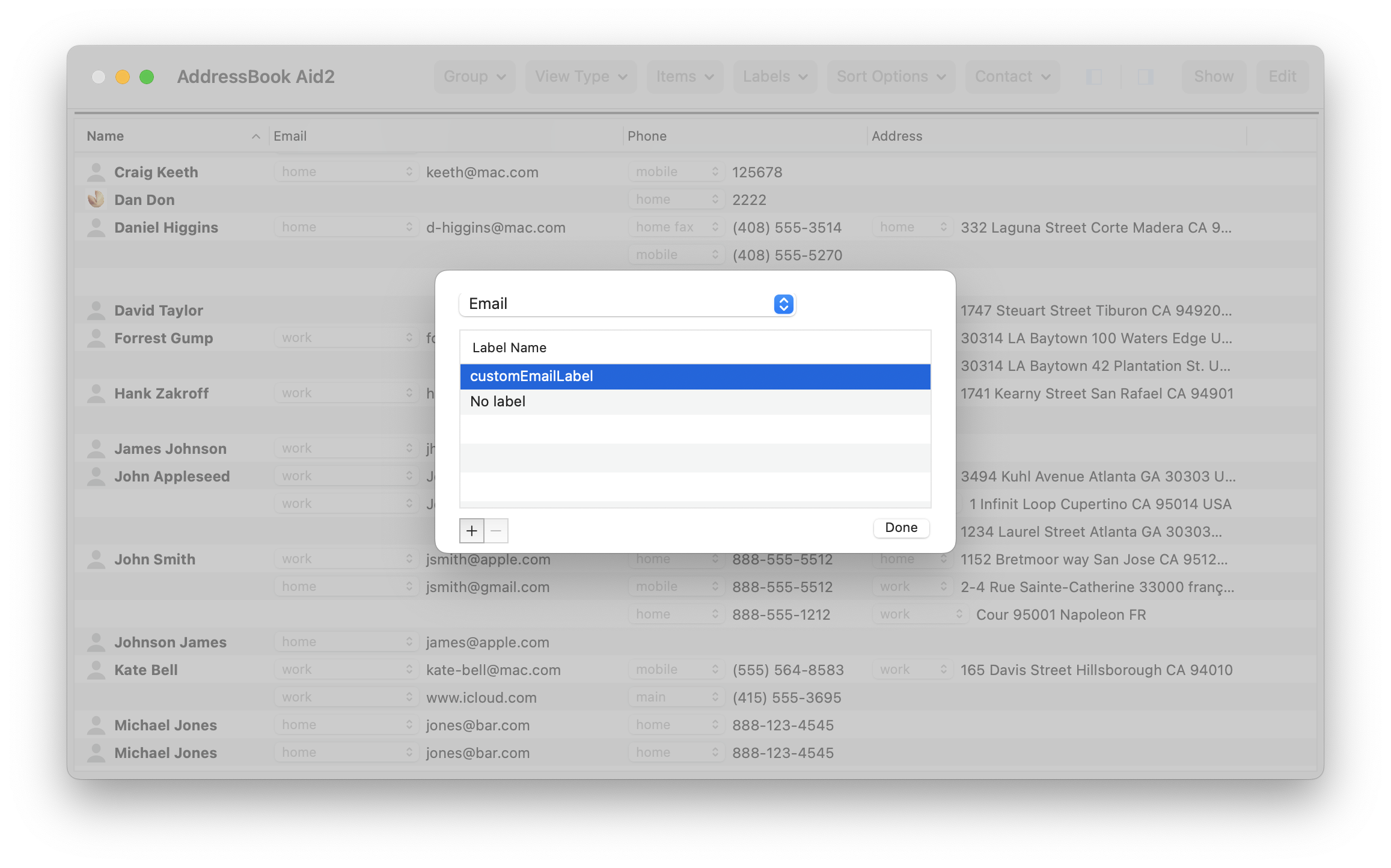
|
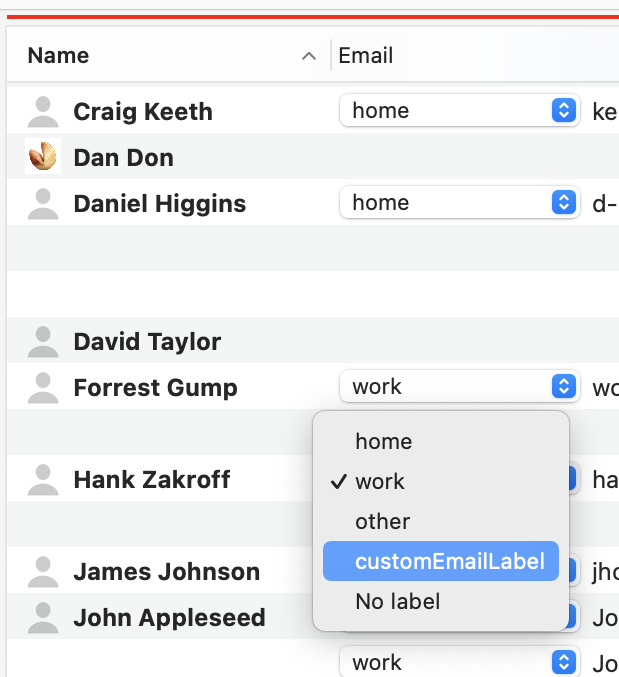
Dynamic Text
You can change font and size in the row of Table.
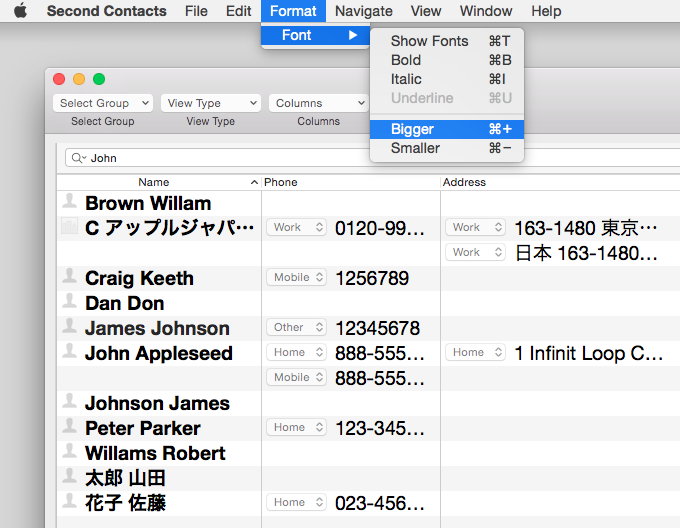
"Copy", "Copy as CSV" and "Copy as vCard"
When you select the "Copy" in the Edit menu, the items of the selected row in the table is copied to the paste buffer in text format. The text is a collection of strings in which the values for each column and separated by tabs. You can paste it into Numbers or Excel as it is. When you select the "Copy as CSV", the strings in the text are separated by commas. And the "Copy as vCard" menu is for copying the contact of selected row as vCard format.
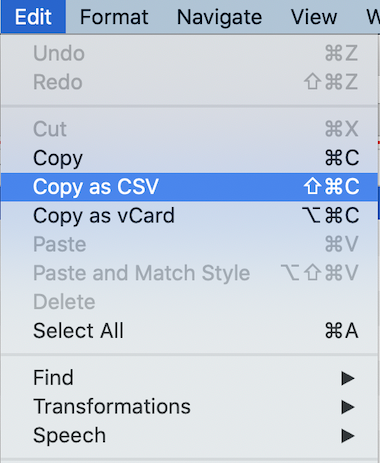
Printing
Select a contact and then select “Print” from the File menu. You can select multiple contacts by cmd-click.
When you select the "Second Contacts" menu in the print dialog, the configuration pane will be shown for selecting a value to print.
Operating system requirements:
Second Contacts works in Mac OS X 10.7 and later.
How to Install the trial version:
Double click on the zip file that you downloaded, then the Second Contacts Trial.app is created.
Uninstallation:
You can just delete this software from the installed folder in order to uninstall this software.